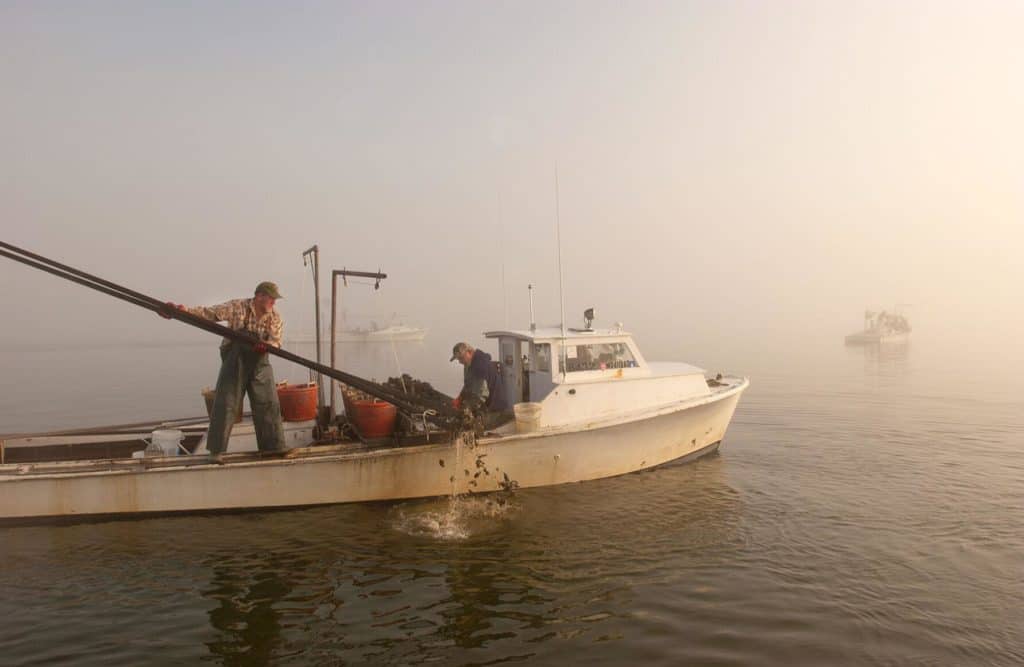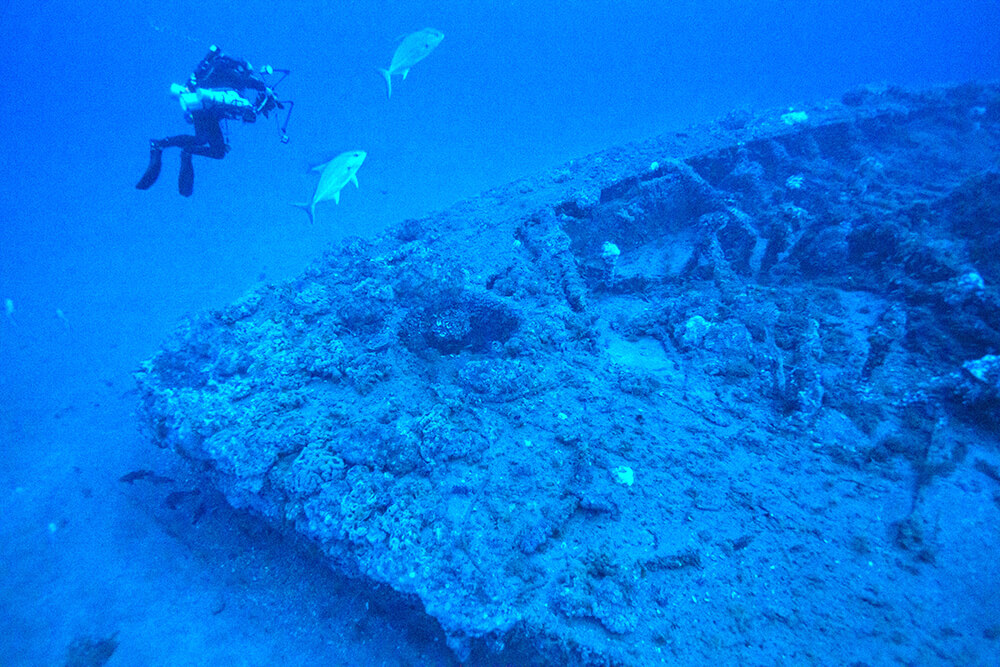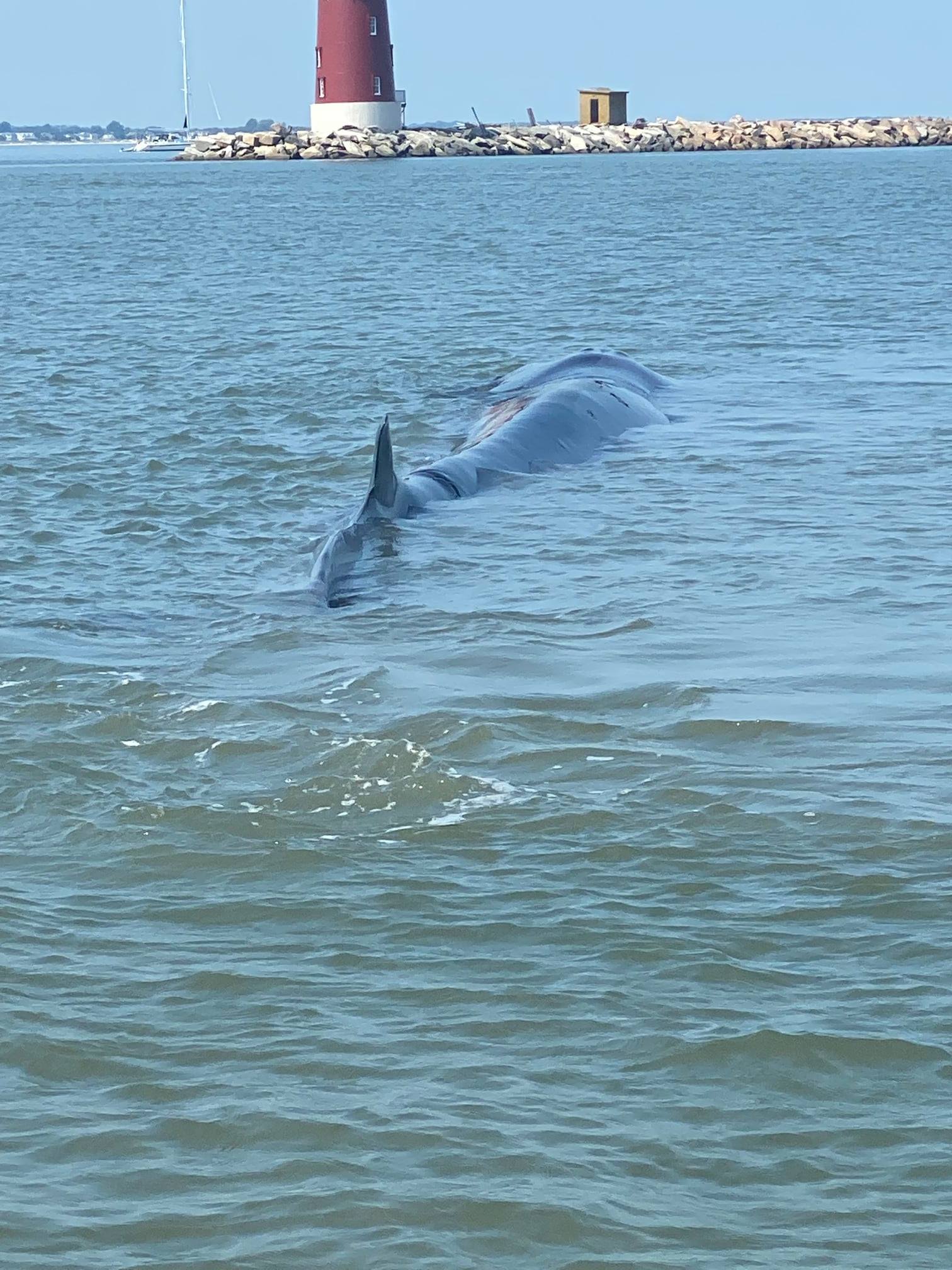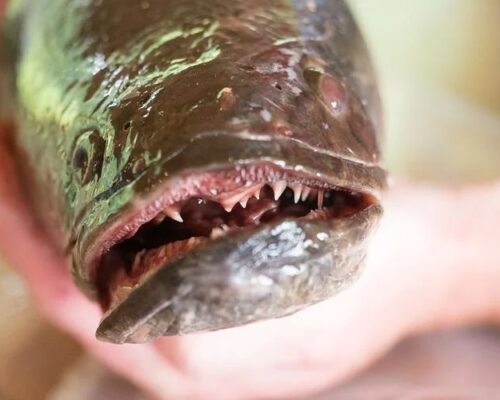By Timothy B. Wheeler, Bay Journal News Service
Amid signs of a significant but uneven rebound in Maryland’s oyster population, the state Department of Natural Resources is planning this fall to ease some harvest limits it had imposed two years ago in a bid to curb overfishing.
A new analysis found that the number of legally harvestable oysters in state waters climbed to around 500 million this year, the third largest number in the last two decades, while the abundance of recently spawned bivalves was estimated to be the highest for that same time span.
After presenting that news at a June 8 meeting of the DNR’s Oyster Advisory Commission, fishery managers proposed letting watermen go back to harvesting wild oysters all five weekdays in the upcoming season that runs Oct. 1 to March 31, 2022. Commercial oyster harvesters had been barred from going out on Wednesdays the last two seasons.
The DNR also proposed shrinking the extent of waters that would be closed to harvesting to conserve scarce oyster populations. Next season, only the Chester River would be off limits, the department suggested, a significant reduction from the previous two seasons, when oystering was barred in most areas north of the Bay Bridge.
But the daily harvest limits of the past two seasons would remain unchanged under the DNR proposal. Watermen who dive for oysters or pluck them from the bottom with hand tongs or patent tongs would be allowed to bring back 12 bushels per person per day, compared with 15 bushels each in the recent past. Those who use power dredges would be limited to 10 bushels per person or 20 per boat with a helper, down from what they had been, while crews dredging the bottom via skipjacks would have to make do with 100 bushels a day.
The DNR had clamped down two years ago after the state’s first stock assessment found that the number of market-size oysters in Maryland waters had declined by half since 1999, and that they had been overharvested in half of the areas open to commercial harvest.
Oysters are a keystone species in the Bay. They filter the water and provide habitat for other fish and aquatic creatures with the reefs they build of their shells. Maryland and Virginia have pledged to conduct large-scale restorations of oyster habitat in five tributaries in each state, and the work is well under way.
Historically, oysters are also a pillar in the Bay’s seafood industry and traditional fishing culture. The tension between their ecological and economic importance has led to conflict, especially in Maryland, where watermen and environmentalists have feuded over regulating harvests, creating harvest-free sanctuaries and spending large sums of state and federal funds to restore reef habitat in some of them.
Jodi Baxter, the DNR’s deputy shellfish manager, explained that the plan to ease some but not all harvest limits was influenced by the varied results from the latest annual update of the state’s stock assessment.
Based on reef surveys and other data in the last year, the number of oysters big enough to legally harvest this year is the third highest it’s been since 1999, according to Trey Mace, a researcher at the University of Maryland Center for Environmental Science who helps track the state’s oyster stock.
The stock update found that the upswing in market-size oysters was most pronounced in the Choptank River and Tangier Sound, where abundance hit 20-year highs. In other areas, though, the number of harvestable oysters remained much lower than it had been in 1999.
And while the update found fewer areas of the Bay experiencing overfishing, it continued in the Choptank River and Tangier Sound, the two areas with the most plentiful oysters.
The update suggested harvests over the next few years could vary. The number of small oysters likely to reach marketable size in the next year or two was estimated to be a little below the long-term average, according to Mace.
But favorable conditions last year produced the biggest crop of new oysters since 1999, he said, particularly in the Choptank, Tangier Sound and mainstem of the Bay. It generally takes three years for young oysters, called spat, to reach harvestable size.
Oyster populations also are trending up in most areas in Virginia’s portion of the Bay, according to Andrew Button, head of conservation and replenishment for the state’s Marine Resources Commission. Surveys there show oysters of all sizes at or near 20-year-plus highs, he said.
Moreover, the size of reefs and the amount of shell available for spat to settle on is stable or increasing in most areas, he said. The Virginia Marine Resources Commission is expected to announce its rules for the 2021–22 oyster season in August.
At the June 8 meeting, Maryland’s commercial watermen welcomed the prospect of harvesting five days a week. Being limited to four days had prompted some to go out in foul weather, they said, risking their boats and personal safety. Jeff Harrison, president of the Talbot Watermen Association, said he lost two weeks getting his boat repaired because “we had to work on days when we shouldn’t have,” including a blustery opening day of the season.
But they also called for the DNR to restore the more generous daily harvest limits, arguing there’s no reason to keep the brakes on under such improved conditions. Watermen landed 330,000 bushels of oysters in the most recent season, a 20% increase over the previous season and more than twice the number landed in 2018–19.
“We’re seeing an increase over time,” Harrison said. “We have a great spat set, so we know in the future we’re going to have oysters.” And he predicted that next year’s harvest would be “unreal” because of the proliferation of young oysters.
Watermen contend that the increase in landings came about because the population rebounded, but the size of the fishery also grew. The number of watermen paying the fee required to harvest oysters commercially increased from 822 in 2018 to 1,239 last fall – also a two-decade high.
The Chesapeake Bay Foundation urged fishery managers to be careful about easing harvest rules. The Annapolis-based environmental group pointed out in a statement issued after the meeting that the Bay’s bivalve population remains a small fraction of what it had been historically. It noted that harvests had increased despite the DNR’s efforts to reduce fishing pressure the last two seasons.
“It’s encouraging to see the highest spatfall since 1999,” said Allison Colden, the foundation’s Maryland fisheries scientist. Good crops of young shellfish could help the population continue to grow “if managed prudently,” she said.
“However,” Colden warned, “certain areas of the Bay are experiencing chronic overfishing that threatens the persistence of oysters in those areas. One good year of spat set won’t resolve this problem, especially if the number of oyster harvesters continues to increase. DNR must adopt regulations that will address overfishing and protect this year’s spat so they can grow, reproduce and build new reef habitat.”
The DNR plans to announce its decision July 1 regarding harvest rules for the upcoming season.




